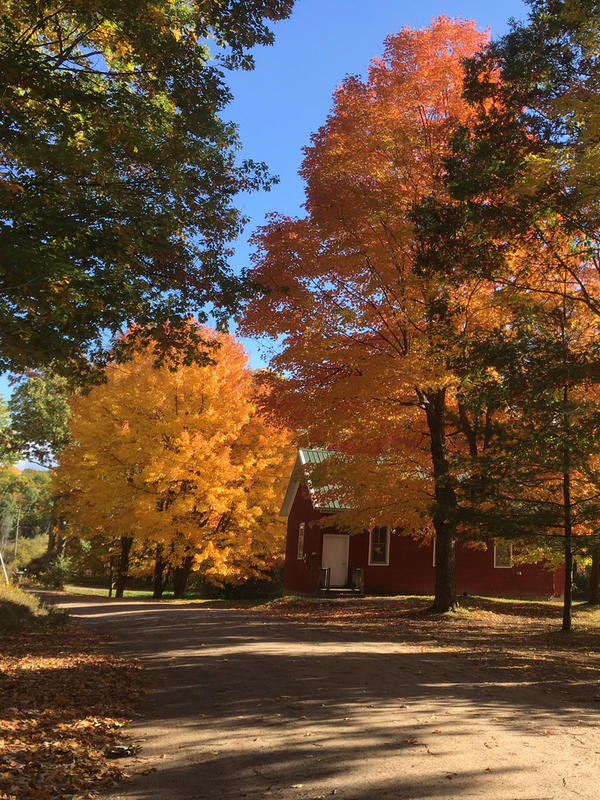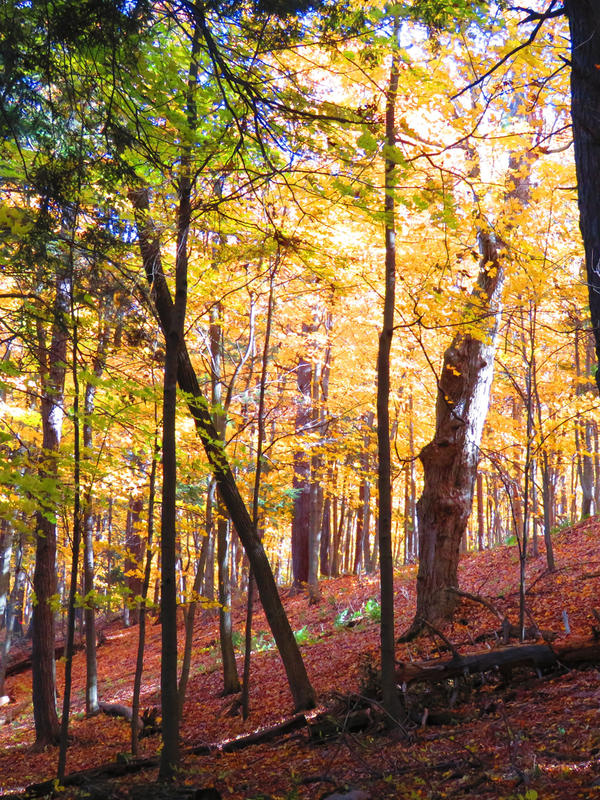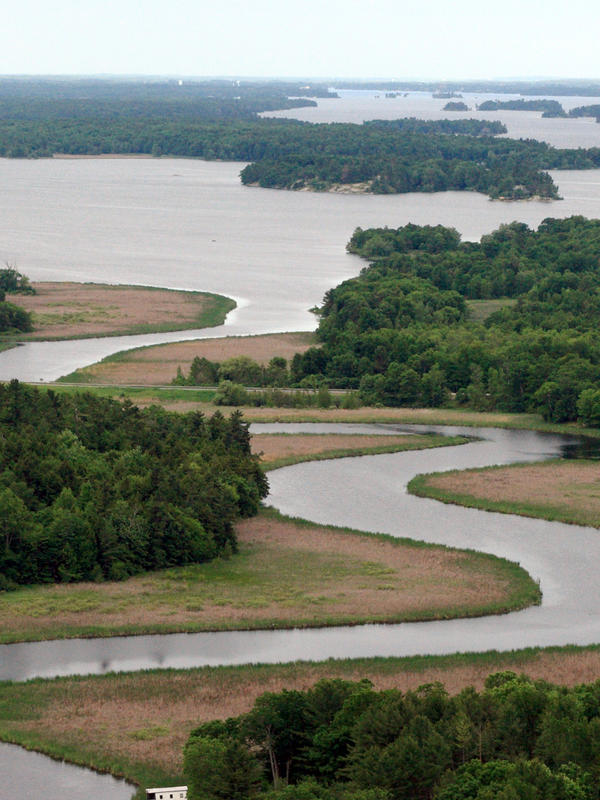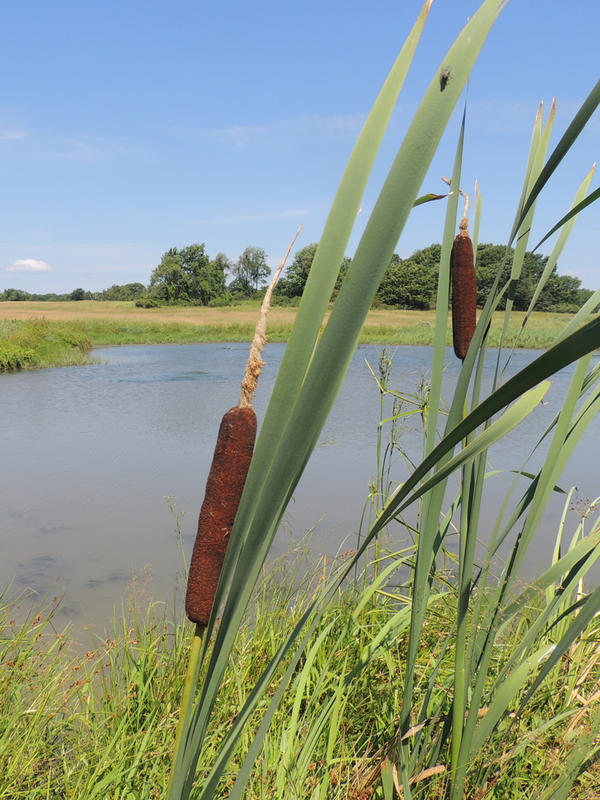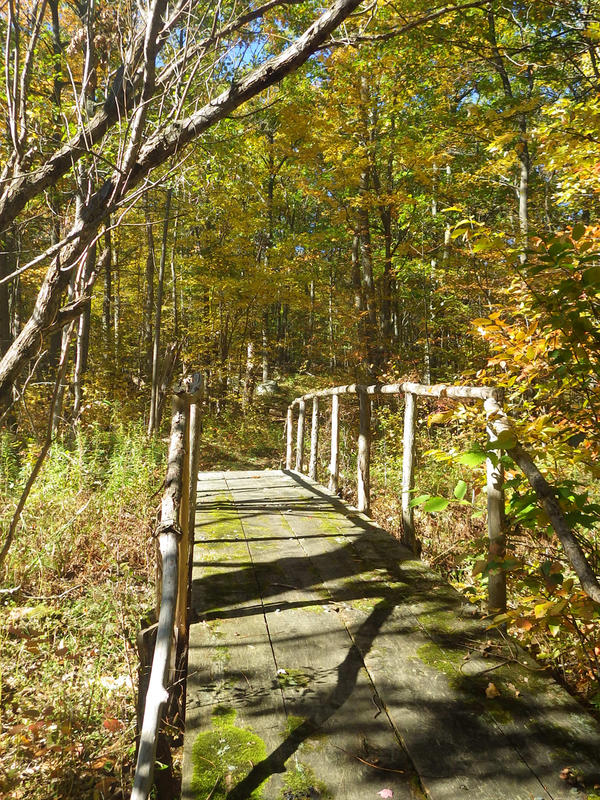Frequently Asked Questions (FAQ's)
What does TILT do?
The Thousand Islands Land Trust’s mission is working to conserve the natural beauty, diverse wildlife habitats, water quality, and outdoor recreation opportunities of the Thousand Islands region. Since 1985, TILT has helped to safeguard the landscape qualities of the Thousand Islands, which contribute so greatly to the character of this place we love, through conservation easements, land acquisition, and by establishing accessible areas available for public enjoyment (including open spaces for hiking, biking, fishing, hunting, birding, and kayaking). While safeguarding some of our region’s most important natural resources, TILT also supports making informed land use decisions, which provide long-term benefits to local taxpayers and municipalities.
Why is Conservation important in the 1000 Islands? Why do we need TILT?
Land supports life, surrounding water, and wildlife, as well as livelihoods and recreation opportunities. TILT’s conservation efforts directly support habitats for threatened and endangered species and filters for clean water in one of the most critical watersheds on earth. Draining the Great Lakes, the St. Lawrence River supports the single largest supply of surface fresh water on the planet. TILT’s service area is part of the Frontenac Arch, an extraordinary region for wildlife, including diverse, breeding bird populations in nationally significant numbers. TILT’s efforts also safeguard the scenic areas of our region and recreation opportunities such as hiking, biking, fishing, and cross-country skiing, which encourage the tourism that supports the vitality of our local economy.
Does TILT have a strategic vision?
Yes. Our communities’ vision for the future focuses on sustaining resilient ecosystems that promote healthy people and a vibrant economy.
FAQ #3: Does TILT have a strategic vision?
Yes. Our communities’ vision for the future focuses on sustaining resilient ecosystems that promote healthy people and a vibrant economy.
In 2018, TILT developed a new Strategic Plan which includes a strategic framework that sets the focus and the direction for the organization over the next 3 years (2019-2021).
TILT envisions the St. Lawrence River shorelines, wetlands, and tributaries conserved to maintain the unique ecology of the Thousand Island region. Water quality, and fish, birds, and our diverse wildlife habitats are protected. Community vitality is enhanced through year-round public access to outdoor recreation. And the scenic beauty which is critical to the region’s tourism-based economy is maintained.
TILT also envisions conserved lands that have a global significance by providing connectivity between the ecologically critical Canadian Algonquins and the American Adirondacks, an area with the highest biological diversity and the greatest climate change resiliency in North America.
Can I Go On a Preserve?
Yes. many of TILT's Signature Preserves are open to the public, and in some cases feature trails for hiking and skiing. Public access can be enjoyed at: Zenda Farms Preserve, S. Gerald Ingerson Preserve, Potters Beach & Grindstone Island Preserves, Sissy Danforth Rivergate Trail, Otter Creek Preserve, Crooked Creek Preserve, Foster-Black Woods Preserve, and Chippewa Bay Preserve.
Land that has a conservation easement on it is not necessarily open to the public. In most cases, this land is private property, owned by someone other than the land trust. The public may not trespass on these properties.
What is "diverse wildlife"?
Many of TILT’s preserves include a mix of wetlands, woodlands, shrub lands, and grasslands, all of which are necessary for wildlife to thrive. Birds like the Eastern Meadowlark, the Savannah Sparrow, and Bobolink rely on open grasslands for nesting and foraging. Today, TILT owns and manages over 1,500 acres of grasslands for threatened and endangered bird species. TILT also protects various creeks, tributaries, and Class I wetlands that act as nurseries for a variety of regional fish species, such as bass, northern pike, and muskellunge.
Further, the Thousand Islands lie in the center of the A2A Corridor, an important migratory pathway for wildlife across the Great Lakes system. TILT and several other regional conservation partners are diligently working to safeguard this wildlife highway for the plants and animals that live, breed, feed or migrate here
What are the recreation opportunities TILT supports?
TILT maintains and operates over 21 miles of trails open to the public that may be used for walking, hiking, biking, birding, and cross-country skiing. TILT 10 Signature Preserves, such as the Crooked Creek and Otter Creek Preserves, also provide opportunities for kayaking and fishing. Hunting and trapping opportunities are offered through TILT’s permit system. TILTreks, KidsTreks, and TILTKids Day Camp are an annual series of education programs that give individuals and families the opportunity to "Get Out on the Land". in 2019, our programs reached a record of over 1000 people! TILT’s Community Garden at the Zenda Farms Preserve offers over 8,000 square feet of planting space, access to experts, the support of fellow gardeners, and a bounty of locally grown, fresh produce.
Why is scenic quality important in the 1000 Islands?
Tourism is a billion dollar industry in the Thousand Islands region and is integral to our local economy, creating jobs and generating new business opportunities. People visit our region, year after year, because of our scenery and environmental quality, which include pristine rivers and lakes, bountiful fish and wildlife, historic architecture, and an abundance of available outdoor recreational activities. These are the very attributes of our River community that TILT serves to protect.
Does TILT participate in habitat restoration?
The Thousand Islands Land Trust is unique among land trusts, as we not only conserve lands, we also work to manage them and improve them, maintaining and providing enhanced habitat for the areas native flora and fauna. Through the management of preserved lands, we are ensuring that these habitats remain in perpetuity.
When TILT acquires a property, it is analyzed to determine the natural resources, species of special concern, and historical uses of the land. Each property is given a management plan, which outlines whether the property will remain forever wild, in a natural state and unmanaged, or if the property will be managed to maintain grasslands, shrublands, forests or wetlands. These management plans can be very sophisticated, especially if the management for specific species is involved.
Partnering with other agencies and organizations, TILT has helped to restore a variety of important habitats in the region, including nesting habitat for Common Terns, grasslands for songbirds, shrublands for Golden-winged Warblers, and wetlands and other nursery areas for aquatic species.
How does TILT operate?
TILT has 6 full-time employees, 2 part-time employees, 4 summer interns, 10 boat launch stewards, over 200 active volunteers, and 16 trustees. Meet TILT’s staff.
Who are TILT's board members?
TILT Board of Trustees care deeply about water quality, natural beauty, outdoor recreation, habitat and wildlife. There are currently 16 board members (TILT’s by-laws allow for up to 18). Meet TILT’s Staff and Board.
How do I get involved?
TILT’s conservation work is only possible through the support of its donors, volunteers, staff, and community. There are many ways to get involved, including becoming a TILT member or Trailblazer, making a donation of land or conservation easement, including TILT in your year-end giving, including TILT in your estate planning, becoming a business underwriter, participating on a TILTrek, attending a TILT event, and becoming a stewardship volunteer. For more information on these many ways to support TILT, click here.
Is TILT an accredited land trust?
Yes. TILT is a member of the Land Trust Alliance, which represents 1,700 conservation groups across America, establishes best professional practices, and provides training to help land trusts meet the highest legal and ethical standards in their work. In 2009, TILT became 1 of 11 New York State land trusts to be accredited. Land trusts must apply for reaccreditation every 5 years. TILT was successfully reaccredited in 2014.
Does TILT own land?
TILT owns in fee 6,998 acres of land, which are conserved as forever wild. These properties are maintained by TILT, providing economic relief for local towns and villages. Examples of these properties include Potters Beach on Grindstone Island, the Macsherry Trail in Hammond, Otter Creek Nature Trail in Alexandria Bay, and Zenda Farms Preserve in Clayton, all of which are visited by tens of thousands of people each year. Learn more about TILT’s 10 Signature Preserves.
How does TILT raise money to purchase fee-owned land?
TILT raises funds for land conservation and environmental education in the form of private donations, private foundation grants, and state and federal grants. In many cases, TILT is able to take every $1 of private funding and leverage $2 of state and federal grants.
Does TILT take land off the tax rolls?
When land is acquired by TILT it may be removed from the tax rolls because it provides public and economic benefits for our region. However, TILT's exempt assessed value is valued at only 0.3% of the total taxable assessed value in our service area. The majority of TILT’s owned lands offer exceptional hiking, biking and cross country-skiing opportunities that are open to the public free of charge. Hunting and trapping opportunities are offered through TILT’s permit system. Examples of properties owned by TILT that are open to the public include Zenda Farms Preserve, Potters Beach Preserve, the Grindstone Island Nature Trail, Crooked Creek Preserve, and Otter Creek Preserve. Read about the value of land conservation in the Thousand Islands.
Does having open space increase the viability of my community?
Absolutely. A common misconception is that tax-exempt properties owned by TILT translate into a loss of revenue for municipalities. Many studies have shown that open space demands fewer municipal services than lands in other use. Open space also tends to generate greater municipal tax revenue than the value of services required by these lands. For example, open space and outdoor recreation areas support our local economy and overall quality of life. Read about the value of land conservation in the Thousand Islands.
How do TILT's owned properties affect my community's taxes?
A study conducted by the Trust for Public Land (TPL) and peer-reviewed by Martin D. Heintzelman, PhD, Associate Professor and Frederic C. Menz Scholar of Environmental Economics at Clarkson University, assesses the impact of preserves, trails, and open spaces on the 1000 Islands region’s economy. The study found that preserves, trails, and conserved open spaces increase the value of nearby residential properties by $55.9 million, increase property tax revenues by $684,000 per year, increase market values of properties in proximity of conserved open spaces up to 2,000 feet by 20% or more, and attract visitors and tourists, generating $16.4 million in labor income and 610 jobs each year, as well as $2.58 million in local taxes and $2.1 million in state taxes annually. Read about the value of land conservation in the Thousand Islands.
What is the scope of TILT's service area and conservation lands?
The Focus Area is where TILT is actively acquiring lands for conservation, completing restoration initiatives, carrying out stewardship monitoring and management activities, and performing public outreach and education. Excluding water bodies, the TILT Focus Area covers 374,269 acres, or 584 square miles. The Focus Area includes a total of seventeen towns spanning across St. Lawrence and Jefferson Counties, and is defined by the 21 sub-watersheds that directly influence the Upper St. Lawrence River.
Of the 374,269 acres of our focus area, TILT conserves over 11,180 acres or 3% (1.16% under easement, 1.82% fee-owned).
Below is a map outlining TILT's Focus Area and conserved lands as of 2014 (some conserved areas outlined are outdated).
Are my donations to TILT tax-deductible?
Yes. TILT is a community based not-for-profit, tax-exempt organization under provisions of section 501(c)(3) of the Internal Revenue code. Donations of land, conservation easements, and financial resources to TILT are tax-deductible under provisions of the Internal Revenue code. Please check with your financial advisor for advice regarding tax deductions. The tax identification number of the Thousand Islands Land Trust is 22-2629183.
What does the future hold for TILT?
TILT’s Signature Preserves and easements will be conserved and monitored in perpetuity (meaning forever), thus, TILT will continue to focus on stewarding these properties that help to maintain the integrity and character of our beloved region. TILT will also continue its efforts to support making informed land use decisions, encouraging a balance of conservation with needs for development.
TILT has also set an ambitious 20-year goal of conserving an additional 10,000 acres of land deemed necessary to preserve the overall ecological integrity of our region. Conserving our land in the future will also provide healthy habitats, on land and in water, for our area’s bountiful wildlife. Lastly, TILT will continue its ongoing education efforts for youth and adults, encouraging a celebration of nature and getting more and more people out on the land and water. Your support is now more important than ever. Our staff and board would like to convey the sincerest appreciation for your interest and support in conserving the place we love.
What is a Conservation Easement?
Landowners can conserve their land while maintaining ownership of the land through a Conservation Easement. A Conservation Easement is a legal agreement between a landowner and a qualified organization, such as a land trust, that restricts specific activities on the land to protect its conservation values.
Conservation Easements allow the landowner to maintain ownership of the land while limiting future development. The property can also be sold or passed onto heirs, with the Conservation Easement forever restricting the land as the original landowner planned, ensuring their wishes for conservation in perpetuity.
Landowners can choose to restrict areas of their land from development, while also setting aside development zones for the future, ensuring a balance between the built environment and the protection of natural resources on the property. Conservation Easements can also ensure future uses on the land as long as they are in agreement with the goals of the Conservation Easement. For example, the cutting of a limited percentage of trees for firewood , as long as it is within the standards for ensuring a healthy forest, can be specified; hunting on the property to continue to manage healthy wildlife populations can also be permitted.
Each easement is unique to the land it governs. The land trust works with the landowner to develop the easement so that the it conforms to the wishes of the donor and protects the conservation values of the land. Contact the office for more information.
Can I Donate my Land to TILT?
Landowners can donate lands with conservation value to the land trust. This means they are transferring the whole, unconditional ownership of the land over to TILT, which will then hold the ownership and care of that land in perpetuity.
Donations of conservation land have many benefits to the landowner such as beginning a legacy of conservation in the region as well as potential charitable tax implications for such a donation.
TILT will hold this land "in-fee" if that is the wish of the donor. The land trust can also resell the property with a Conservation Easement on it to ensure its future protection. Again, this option depends on the donor’s intent for the donation of the property and would be outlined at the time of the donation.
Can I conserve my land and still sell it?
Landowners who want to sell their property and don’t want to see it over-developed can work with TILT staff to place a Conservation Easement on their land prior to its sale. By placing a Conservation Easement on the property, the landowner is ensuring protection in perpetuity, no matter who owns the land.
What are examples of TILT successes?
TILT’s 10 Signature Preserves are among its most cherished successes. Signature Preserves that are open to the public year-round include Foster-Blake Woods Preserve, Grindstone Island Preserves & Nature Trail, S. Gerald Ingerson Preserve & Sissy Danforth Rivergate Trail, Zenda Farms Preserve & MacFarlane Trail, Otter Creek Preserve & Nature Trail, Chippewa Bay Preserve, and the Crooked Creek Preserve & Macsherry Trail. Other Signature Preserves that can be visited during a TILTrek, auction package, or other special events include Fort Haldimand on Carleton Island, Rocks & Shoals, and Wellesley Island Preserve.
Does TILT sell land donated to the organization?
When a landowner donates land to TILT, the landowner may choose to discuss the possibility of TILT selling the property in the future to raise funds for stewardship, outreach, educational, or other conservation projects. This would be conducted in full accordance with landowner intent and the provisions for the land created by the landowner. All conservation properties sold are protected with a permanent conservation easement.
Tell me about TILT's conservation easements.
Under conservation easements, ownership of the property remains with the landowner, but activities such as development, commercial timber harvesting, and mining can be limited—by the landowner’s voluntary choice—in an effort to protect the character of the landscape. Lands protected by conservation easement remain on the tax rolls. TILT holds 4,286 acres of land in conservation easements.
